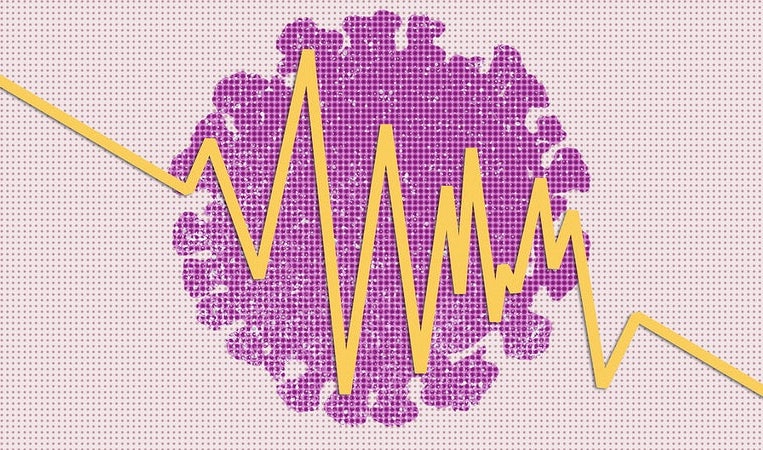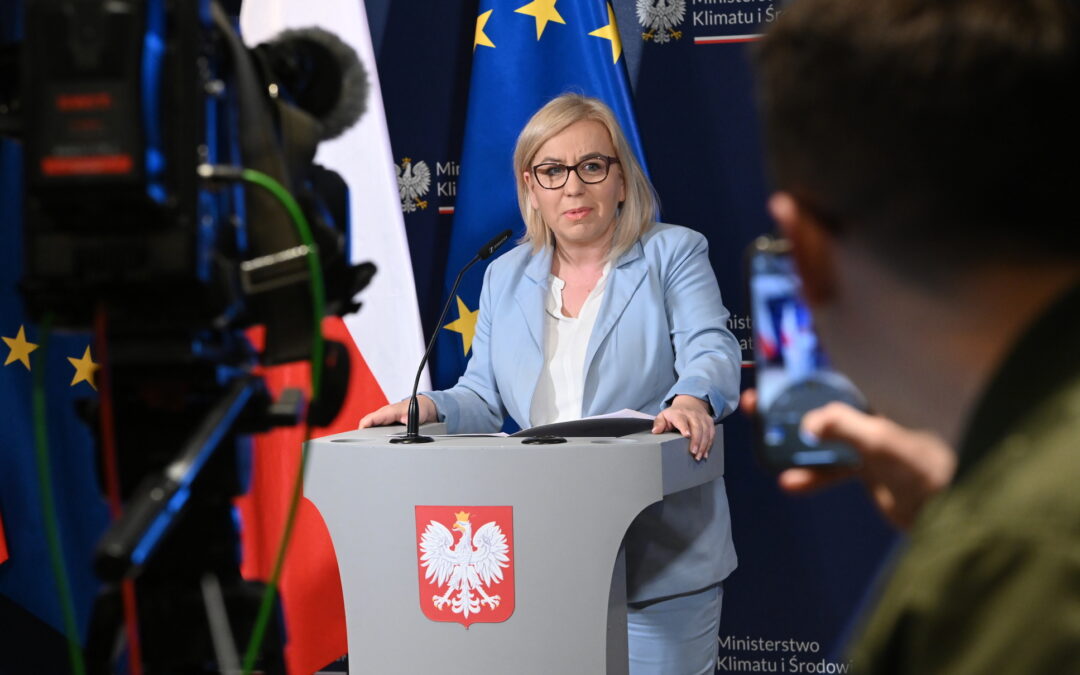By Marcin Czaplicki (tekst dostępny również w języku polskim)
The coronavirus pandemic will push Poland into recession for the first time in almost 30 years—something that even the global financial crisis of 2008 did not manage to do.
Yet just as back then Poland was the only country in the EU not to enter recession, now it is predicted to be among the European economies least affected by the current crisis. Furthermore, the post-pandemic repercussions could put the country in a better starting position in the global economic race to recovery than many of its neighbours.
But to ensure that it is, Poland must seize the opportunities that will emerge with the shake-up of the global economy.
A green island
The crisis in 2008 began for Poland with a severe weakening of the zloty. While for many economies this would mean an outflow of capital and a sudden stop to the economic boom funded by cheap credit, for Poland it entailed a major opportunity provided by possessing its own–cheaper–currency.
At a time when everything was falling – consumption, investments, export and import, it turned out that the GDP, which is the sum of all the aforementioned components – did not fall. How was this possible? Exports, supported by a cheaper currency, fell less than imports, which were burdened with a worse exchange rate.
What certainly also helped was the structure of the export itself –in particular a larger proportion of consumer goods than capital goods – while consumption in a “normal” crisis is usually affected less than investments. Luck also played a role, in the form of the earlier reduction in disability pension contributions, which gave Poland the necessary fiscal impulse.
A key factor proved to be the injection of EU funds supporting public investments. In addition, the demand side was stabilised by the relatively large internal market and 38 million aspiring consumers, who, unlike their counterparts in the West, had not run up mountainous debts during the previous credit boom.
The long road from 2008 to 2020
But this time it is different: the pandemic crisis in fact started from the consumer. Even before economies began to be shut down, we had already stopped going to restaurants, cinemas, and shopping centres, for fear of catching the virus. This sudden fall in consumption and closing of entire areas of the economy as a result of lockdown restrictions is the main reason why, after 28 years’ miracle of uninterrupted economic expansion, this year Poland’s GDP will shrink.
This does not mean that the natural safety buffers of the Polish economy discussed above stopped working. Moreover, in the last ten years we have developed others that make the Polish economy even more stable.
A strong, well-capitalised banking sector, low private and public sector debt, and a developed services sector, especially IT and BPO (business process outsourcing), which can easily be switched to home office mode, make the Polish economy strong at present.
Balanced CA, high share of IT&BPO services, reinvested dividend payments, high payments to short-term workers being a buffer in the time of slowdown, as well as balanced net exports of commodities improve Polish resilience to the economic effects of #COVID19 pandemic pic.twitter.com/WutB4TEP4u
— PKO Research (@PKO_Research) April 14, 2020
The sectors feeling the crisis worst, i.e. entertainment, hospitality, tourism, and long-distance passenger transport, make a smaller contribution to the Polish GDP than they do in other EU states. As a result, despite difficulties at micro level, the economy as a whole has not faced the fears before the upcoming holiday season experienced in Italy, Greece and Spain, where millions of jobs depend on the seasonal inflow of tourists.
Poland is also supported by the fact that in many spheres it has ceased to be – or often never was – a typical developing economy: we have a trade surplus, and for years have been reducing our external debt to GDP ratio. Furthermore, we are not dependent on export of raw materials. On the contrary, to a large extent we are benefiting from the fall in prices, for example by importing cheaper petroleum.
Various shades of red
It is therefore no surprise that the European Commission, in its spring forecast published last week, noted that the Polish economy is recording one of the “shallowest” recessions in the entire EU. The International Monetary Fund had previously presented similar forecasts.
Yet this should not lead us to believe that we will emerge from the crisis unscathed. Pessimists might say that if we were to measure the distance between what we had last year (4.1% GDP growth) and what we will have this year (-4.3% according to the EC), the comparison to Poland’s neighbours is by no means favourable. The country then falls to seventh place in the EU.
But an optimist might notice that by the end of 2021 Poland will be in a group of three economies that manage to fill in the hole that the crisis drills into its GDP.
The pessimist would agree that we will fill the hole, but also point upwards towards the place where we might be if it were not for the pandemic: Poland’s GDP in 2021 will be around 7% lower than the EC previously estimated, which will put us around the rear of the EU.
A realist, however, would point to the most important measurement, i.e. the potential GDP growth rate, meaning the long-term rate of development of the Polish economy, without the ups and downs of the economic cycle. Here, the Commission’s forecasts place the country in the spotlight. Just behind little Lithuania and equal with even smaller Estonia, we will have the fastest long-term growth rate in the whole of the EU, almost unchanged from what came before the crisis.
Everything has a price
Being a leader comes at a price, however. This is visible in the public deficit statistics. Stabilisation of the economy demands significant investment, and a decline in consumption, increased unemployment or lower production mean lower income to the budget from taxes.
As a result, the Commission forecasts that in 2020 Poland will have the fourth largest deficit in the EU, amounting to 9.5% of GDP. But this is not necessarily a bad thing. Even ratings agencies have said that this year’s deficits will not have a negative impact on evaluation of governments’ credibility. In the pandemic, action is needed.
Various governments have therefore been presenting a plethora of anti-crisis schemes and packages of impressive proportions, with the German 30% of GDP at the forefront.
The government’s so-called “Anti-Crisis Shield” in Poland has not compared particularly favourably to other aid schemes–not to mention the sluggish pace of its implementation. After the introduction of the Financial Shield, however, we can confidently say that the real cash coming from the government is among the largest in Europe.
This impetus has a chance for success as a result of the speed, scale and coordination of the main economic policy institutions: the government, the National Bank of Poland and the Polish Development Fund.
How has Central and Eastern Europe responded to the economic fallout from Covid-19? We take stock of their fiscal and monetary policies.https://t.co/DUNDaDpjfS pic.twitter.com/WuU82CQE8Q
— ING Economics (@ING_Economics) May 10, 2020
Prospects are not entirely rosy
Despite the less pessimistic EC forecasts for Poland than for other economies, there are a number of risk factors. While the sectors affected least by the crisis are not the strongest in the Polish economy, the next in line – trade and logistics as well as freight transport – certainly are.
Poland also has among the highest percentages of self-employed people in Europe. It is therefore essential to open the economy accordingly, as well as to guarantee efficient trans-border movement of goods.
It is extremely important to ensure that the economy is funded smoothly after the crisis, and a key role here will be played by the same banks that for the last few years were the object of growing aversion and criticism. While the sector as a whole is stable and safe, the same cannot be said for all its components, especially the smaller ones, which are particularly affected by a decrease in interest rates – their main source of income. The last thing we need now is a banking crisis.
Poland’s economic golden age is not over yet
The pandemic recession will pause, but not end, an unprecedented era in the history of the Polish economy. According to the European Commission, Poland will maintain a high rate of long-term economic growth, which in recent years has been most visible in the number of cranes building new high-rises in the biggest cities.
But there needs to be somebody to work in these office buildings, and Polish society is ageing. More and more of us are retiring. This is why schemes for activating the population, especially women, and supporting the inflow of workers from abroad are so crucial.
We still have large reserves in the form of high employment in agriculture. This structural weakness of the Polish economy has become an asset, if we realise that workers leaving the least efficient sector, agriculture, almost immediately increase their productivity. Similar effects come from training staff, especially considering the decent level of primary and secondary education provided in Poland.
These are the reasons why the European Commission assesses Poland as one of two economies where labour force productivity will increase during the crisis. This is significant since the turmoil might turn the global economy upside down (or at least change it), especially in terms of how it previously functioned. The break in supply chains at the beginning of the epidemic in China demonstrated how important it is to diversify it by distributing production in various regions.
Poland, with its high productivity, has become more competitive compared to other countries in the CEE region. As recent years have shown, this is a key factor attracting investment. The second factor is an active trade policy and encouraging companies – even now – to come to Poland.
Every crisis is a tragedy for millions, but the revival that follows it means that it is also an opportunity that Poland can exploit. The start we get off the blocks will be decisive in determining our finishing position.
Translated by Ben Koschalka. The original Polish version of this article can be found here.





















